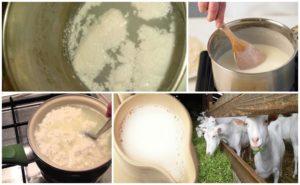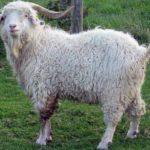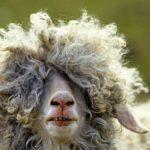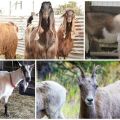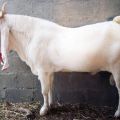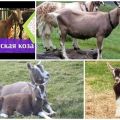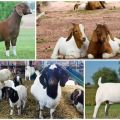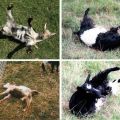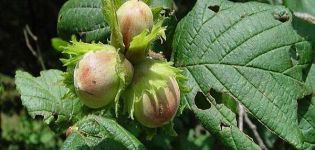Description and homeland of Angora goats, features of wool and content
Goat breeding is a popular area of domestic and industrial breeding of farm animals. Domestic goat breeds can be divided into dairy, meat, wool. Among domestic goats, there are also versatile animals that provide different products. A well-known and popular breed in the world is the Angora wool goat or Angora. Today these animals are bred on all continents for their wonderful coat.
History
Angora is a highly specialized breed of wool. The exact time of the appearance of the breed is not known. It is assumed that this happened about 4 thousand years BC. The place where these goats first appeared is Asia Minor. Now it is part of the modern middle Turkey.
The breed received its name from the Turkish city of Angora, or in the modern pronunciation Ankara. The wool of these goats was called mohair or mohair. The first representatives came to Europe in the middle of the 16th century. They were brought to the Roman Empire by the traveler Ogier Guilen d'Bübeck.
Since the beginning of the 19th century, Angora goats from Turkey came to South Africa, where they are bred to this day. In the middle of the 19th century, these animals were brought to the territory of Texas, USA. Today, this state ranks first in the country and second in the world for the production of mohair.
Breeding methods for breeding Angora goats are also not fully understood. Most likely, their ancestors were coarse-haired goats. This confirms the similarity of the wool of newborn kids with the wool of adult coarse-haired animals. Further changes in the coat were most likely the result of an accidental mutation. Later they were fixed by folk selection.
Description and characteristics of the breed
The height of females at the withers is 0.6 m, and that of males - 0.7 m. The average weight of queens is 40-50 kg, adult goats can weigh 50-60 kg. The head is elongated, hunchbacked. Hanging ears, rather long. Females and males have beards and horns. Goats have small horns, they are bent back and slightly diverge to the sides. The heads of the goats are decorated with rather long, double-curled horns on both sides. The neck looks pressed into the body, the chest is rather flat, the limbs are short. They end in brown-amber hooves.
Animal fur deserves special attention. It is curly, thick and soft, covering the entire body except for the legs, muzzle and ears. On these parts the hair is very short, while on the body the long hair falls almost to the ground.
Wool is characterized by the following indicators:
- length - 20-25 cm;
- strength - about 14 km breaking length;
- the number of short, up to 6 cm, hair - no more than 2%;
- the yield of pure fiber is up to 80%.

The dense scaly layer of the transitional hair gives the coat its famous shine (chandelier).
Pros and cons
Like any breed, Angora goats have their positive and negative sides.
The pluses include:
- unpretentious to feed, eat and assimilate different foods;
- quick adaptation to different climatic conditions;
- good immunity;
- excellent quality wool;
- high wool productivity with two haircuts per year.
In addition to all of the above, these animals give good milk with a fat content of up to 4.4% and a pleasant taste, meat without foreign smell.
Among the disadvantages are the following:
- sensitivity to moisture;
- drop in productivity with lack of care;
- problems with fertility and maternal instinct.
A pregnant angora, if she feels a threat to her health, can shed the fetus.
Care and maintenance of the Angora goat
When arranging a barn for keeping Angora goats, it is necessary to provide for an area of at least 4 square meters per head. It is advisable not to keep more than 30 animals in one room. It is necessary to provide for the separate keeping of females and males.
Basic requirements for the content:
- dry room with good ventilation;
- the presence of a wooden floor with a litter of straw, sawdust, pine needles;
- regular whitewashing of the premises for the purpose of disinfection.
For maintenance in the winter, you need to make windows through which natural light will flow. The temperature regime in the barn with goats in the winter should be about +8 degrees. In warm weather, goats can be kept in a free enclosure. For this, a walking yard is arranged around the premises. It is fenced off with a fence of at least 2.0 meters in height.

A patio or paddock is also useful for walking goats in winter, since angoras need to be outdoors regularly. Feeders and drinkers should be arranged in such a way that animals have free access to them.
Diet
Angoras are unpretentious in nutrition. In the summer, it is advisable to organize grazing. If possible, it is better to do this not on a flat meadow, but where there are small hills or slopes. Grazing in wet and swampy places is contraindicated for this breed. Before and after grazing, goats need to be fed with hay.
When stalling goats are fed:
- hay;
- branches of trees;
- compound feed;
- grain;
- bran.
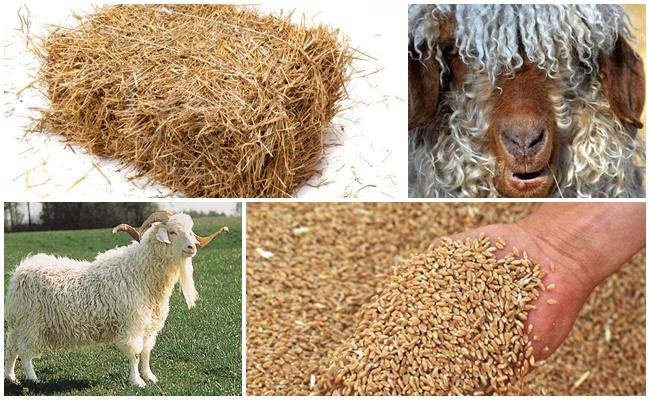
Use salt, chalk, meat and bone meal, special premixes as top dressing. In summer, goats are watered at least 2 times a day, in winter - 1 time.
Prospects and features of breeding
Breeding angora goats is a promising area in animal husbandry. This is due to the fact that if milk and meat go to the domestic market, then high-quality mohair is in demand in other countries. In addition, it does not belong to perishable products and can be stored for quite a long time.
An angora farm owner will receive income from three types of products:
- wool;
- meat;
- milk.
Moreover, income from the sale of meat and dairy products will not yield to income from the sale of mohair. Now animals with black, brown, red wool have been bred. Breeding colored animals has its own perspective.
Disease prevention
The main prevention of infectious and non-infectious diseases is the correct maintenance and good feeding of the livestock. Angora goats are quite susceptible to the anthrax pathogen. Prevention consists in the annual vaccination of animals and regular disinfection of the premises. Angoras and brucellosis are ill. This disease is dangerous due to premature miscarriages, decreased productivity.Prevention consists in the acquisition of livestock tested for this disease, which has documentary evidence.
In order to prevent diseases such as tuberculosis, foot and mouth disease, listeriosis, it is necessary not only to buy healthy animals from safe farms, but also to withstand newcomers in quarantine.
How to choose a good goat when buying
When choosing an adult goat, it is important to check its teeth so that the seller does not slip the old animal. To do this, it is worth grabbing a hard crouton and giving it to the selected individual. A young animal will gnaw the treat in a few seconds, and the old one will spend a long time on it.
It is important to examine the animal's fur, to push it apart in several places. The skin should be clean, without scratching, wounds. Do not buy an animal if it has deformed hooves covered with a dull horny layer.



